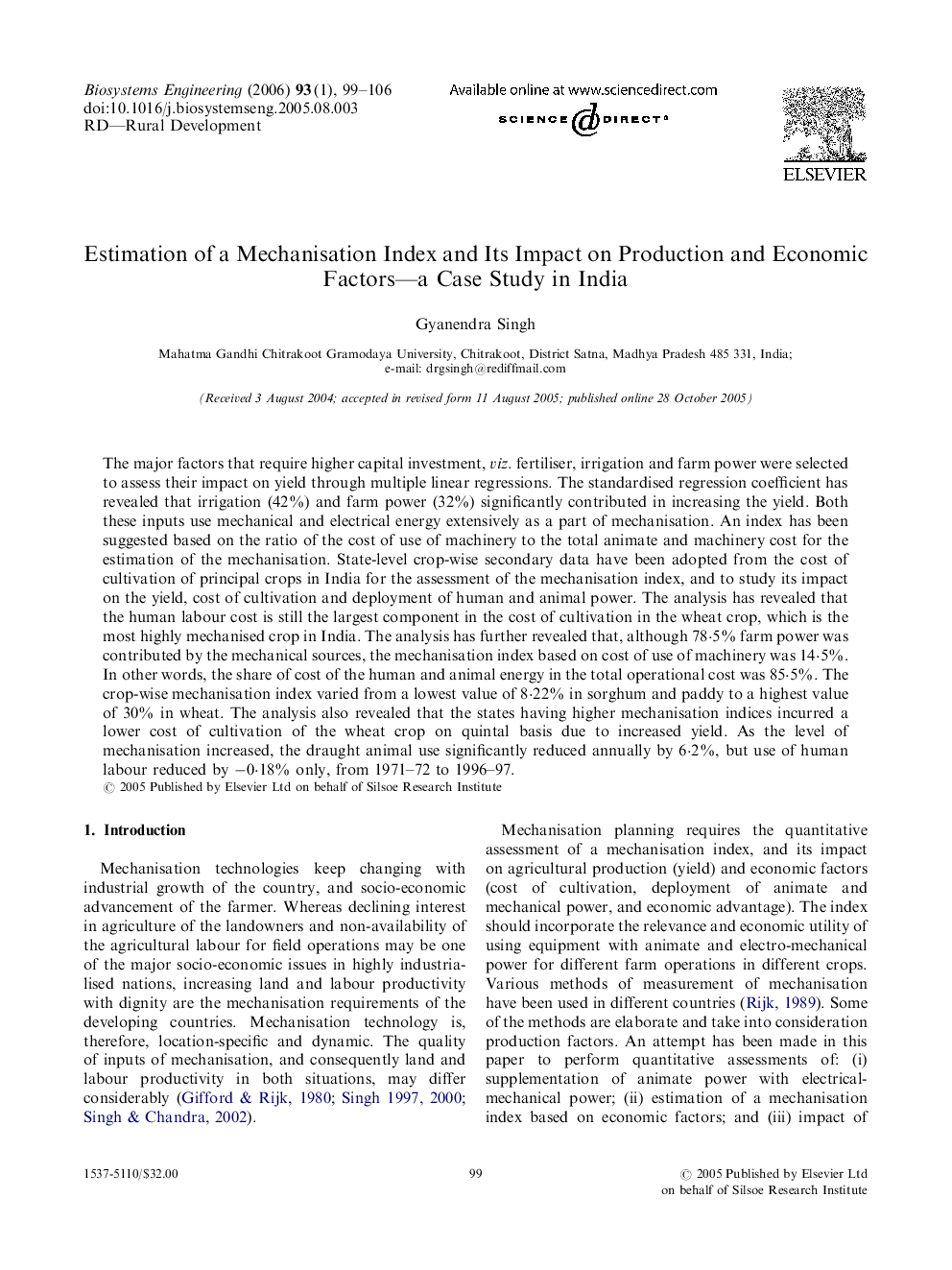| Article ID | Journal | Published Year | Pages | File Type |
|---|---|---|---|---|
| 1712752 | Biosystems Engineering | 2006 | 8 Pages |
The major factors that require higher capital investment, viz. fertiliser, irrigation and farm power were selected to assess their impact on yield through multiple linear regressions. The standardised regression coefficient has revealed that irrigation (42%) and farm power (32%) significantly contributed in increasing the yield. Both these inputs use mechanical and electrical energy extensively as a part of mechanisation. An index has been suggested based on the ratio of the cost of use of machinery to the total animate and machinery cost for the estimation of the mechanisation. State-level crop-wise secondary data have been adopted from the cost of cultivation of principal crops in India for the assessment of the mechanisation index, and to study its impact on the yield, cost of cultivation and deployment of human and animal power. The analysis has revealed that the human labour cost is still the largest component in the cost of cultivation in the wheat crop, which is the most highly mechanised crop in India. The analysis has further revealed that, although 78·5% farm power was contributed by the mechanical sources, the mechanisation index based on cost of use of machinery was 14·5%. In other words, the share of cost of the human and animal energy in the total operational cost was 85·5%. The crop-wise mechanisation index varied from a lowest value of 8·22% in sorghum and paddy to a highest value of 30% in wheat. The analysis also revealed that the states having higher mechanisation indices incurred a lower cost of cultivation of the wheat crop on quintal basis due to increased yield. As the level of mechanisation increased, the draught animal use significantly reduced annually by 6·2%, but use of human labour reduced by −0·18% only, from 1971–72 to 1996–97.
